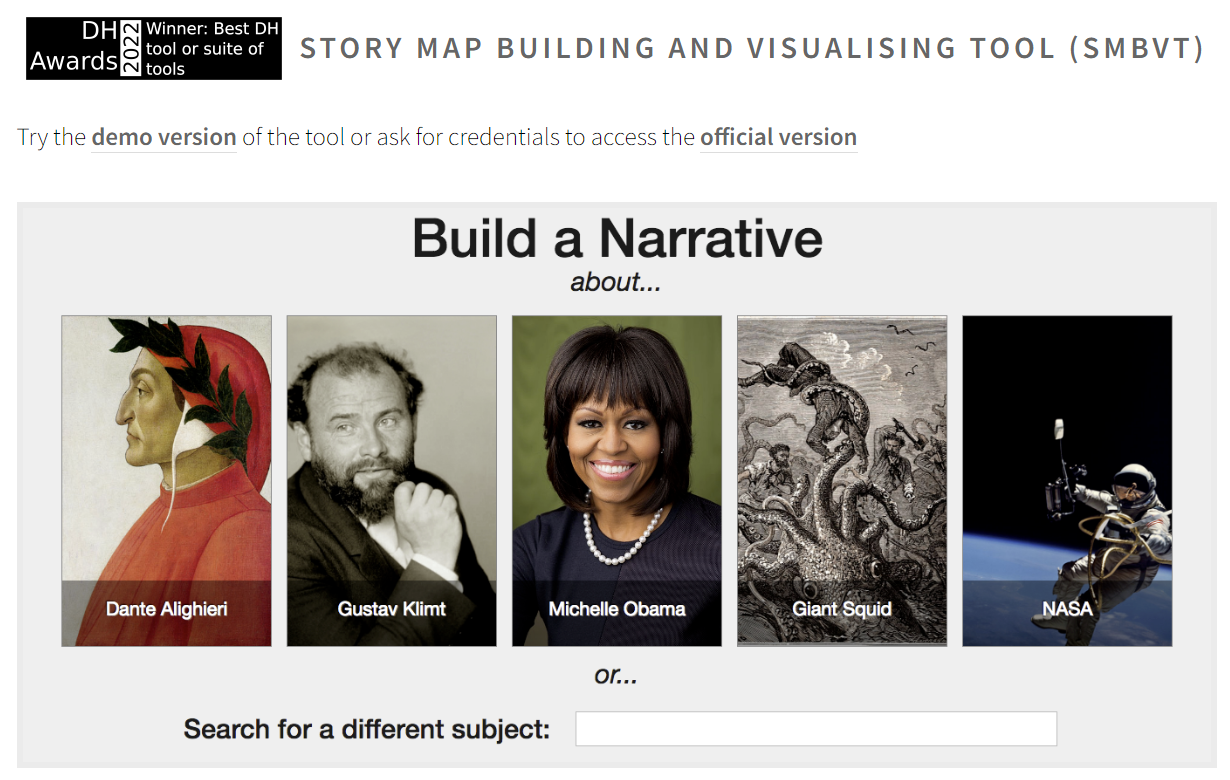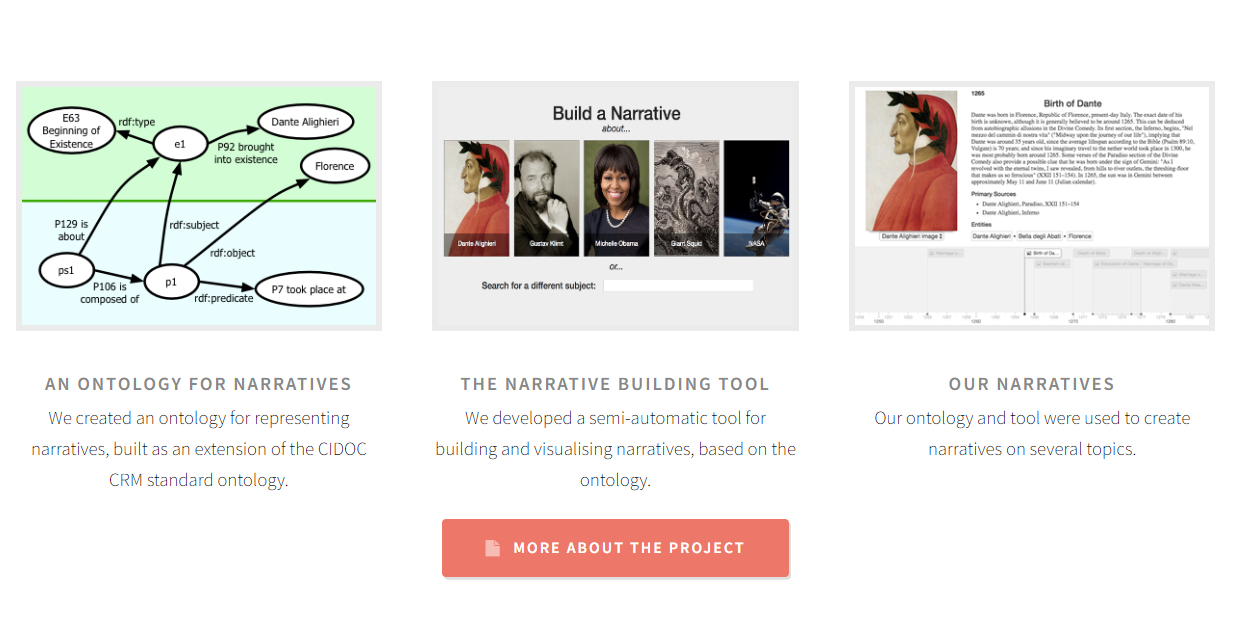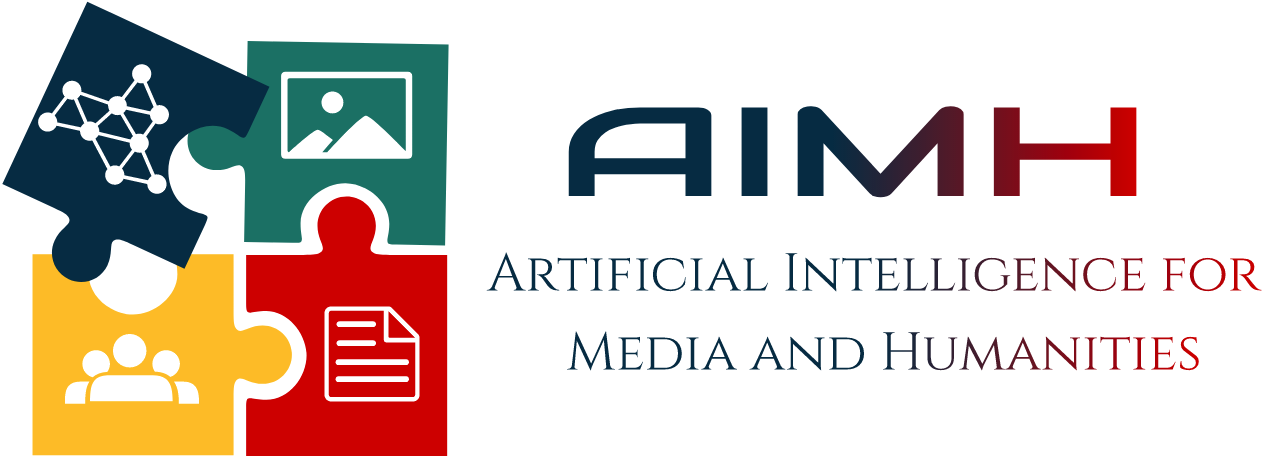
SMBVT AMONG THE WINNERS OF DH AWARDS 2022
DH Awards is an annual international initiative whose scientific committee selects, upon notification by the community of scholars and practitioners in the Digital Humanities, a series of projects and initiatives that combine the digital with the humanities. The projects nominated in various categories are then awarded based on the votes cast by the community.
The Story Map Building and Visualising Tool (SMBVT) is a semi-automatic tool to construct narratives and visualise them in the form of story maps.
SMBVT won the DH Awards in the category “Best DH Tool or Suite of Tools”. The tool was developed using Semantic Web technologies by the group of Digital Humanities of AIMH laboratory. At the development of the tool collaborated Valentina Bartalesi, Emanuele Lenzi and Nicolò Pratelli.

FORMAL NARRATIVES IN DH
A narrative is a conceptual basis of collective human understanding. Humans use stories to represent characters’ intentions, feelings and the attributes of objects and events. A widely-held thesis in psychology to justify the centrality of narrative in human life is that humans make sense of reality by structuring events into narratives. Therefore, narratives are central to human cultural, scientific, and social activity. Story maps are computer science realizations of narratives based on maps. They are online interactive maps enriched with text, pictures, videos, and other multimedia information, whose aim is to tell a story over a territory. This talk presents a semi-automatic workflow that, using a CRM-based ontology and the Semantic Web technologies, produces semantic narratives in the form of story maps (and timelines as an alternative representation) from textual documents.

SEMANTIC WEB FOR MANUSCRIPTS
The world’s image created during the Middle Ages and Renaissance represents a fruitful, complex and interesting research field for studying the Ecumene history of knowledge, the identity of peoples and nations and the development of modern geographical thought.
The research project IMAGO (Index Medii Aevi Geographiae Operum) was born in the context of the multidisciplinary study and based on shared experiences in medieval literature, philology, and Digital Humanities. The idea is to involve and connect the best resources and skills in these areas to create new tools useful for the scientific community.
The project exploits the Semantic Web technologies to create a CRM-based ontology to represent the collected knowledge. Scholars populate the ontology through a semi-automatic tool, and the data are collected in a KB and published on the Web as Linked Open Data. The Web application allows users to query the KB and visualise the data user-friendly and intuitively, e.g. charts, maps and tables.
